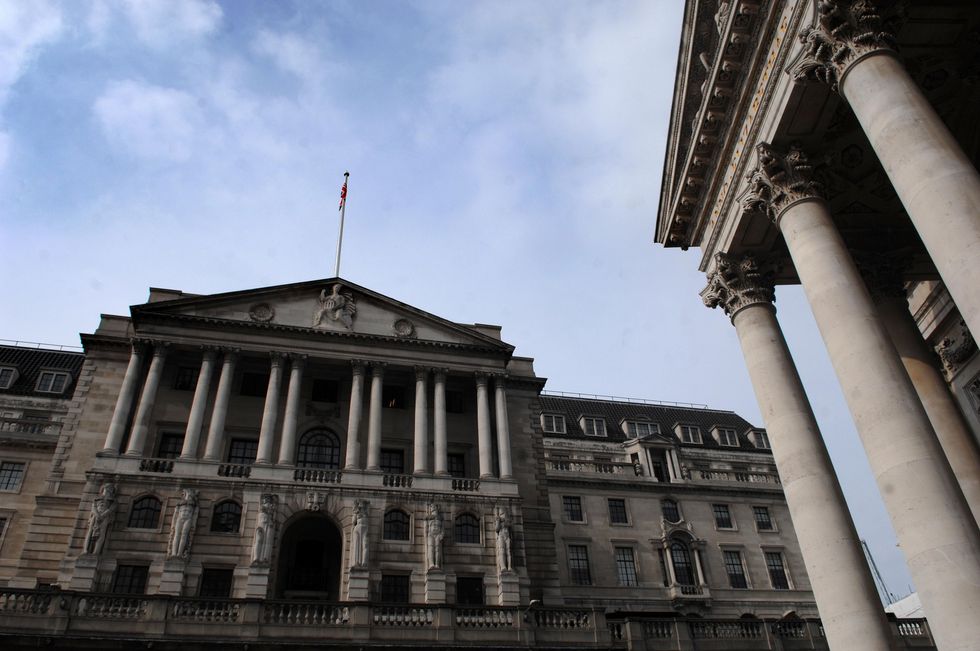Economist Julian Jessop says the UK will 'indirectly benefit' from Trump's trade tariff
GBNEWS
The rate of UK unemployment remained unchanged at 4.4 per cent new figures have shown
Don't Miss
Most Read
Trending on GB News
UK average regular earnings growth rose to 5.9 per cent in the three months to December, the Office for National Statistics has said.
This is 3.4 per cent higher after taking Consumer Prices Index inflation into account.
Total pay growth – which includes bonuses – hit six per cent in the same period, also up from 5.6 per cent.
Wage growth accelerated for the third straight month at the end of last year, fueling concerns that persistent inflation will keep interest rates elevated in 2025.
Monica George Michail, economist at National Institute of Economic and Social Research said: “Today’s figures show that annual total wage growth remains strong. We expect wage growth to moderately slow but remain elevated at 5.2 per cent in first quarter of 2025.
“Persistent strong wage growth has been causing a headache to the Bank of England, and will likely continue to do so in the next few months, leading the MPC to exercise more caution with regards to interest rate cuts.”
The unemployment rate stayed steady at 4.4 per cent, and monthly payrolls unexpectedly increased by 107,000, while economists had predicted a drop of around 55,000 and a slight rise in unemployment to 4.5 per cent by the end of the year.

UK pay grows 5.9 per cent despite slow jobs market
GETTYAlthough the figures broadly aligned with City forecasts, the uptick in wage growth signals that inflationary pressures remain high, which could hinder the Bank of England's ability to make aggressive interest rate cuts.
The Bank lowered rates earlier this month to 4.5 per cent, but several members of the Monetary Policy Committee have cautioned against making rapid cuts due to persistent price pressures.
Huw Pill, the Bank’s chief economist, said: “We’re not in a situation where we can declare job done,” citing the “surprising” surge in wage growth.
Policymakers anticipate that wage growth will slow as slack builds up in the labour market. Consumer price inflation is currently at 2.5 per cent and is expected to rise to about 2.8 per cent when the January data is released on Wednesday.
Job vacancies, which have been falling for the past two years, decreased again by 9,000 to 819,000, remaining just above pre-pandemic levels.
LATEST DEVELOPMENTS:
Yael Selfin, chief economist at KPMG UK, said: “Pay growth increased to 5.9 per cent in December however, we expect a steady downward trend over the coming months. Demand for staff has declined, with vacancies remaining at close to pre-COVID levels.
“Additionally, there has been a marked improvement in the availability of workers. We expect this to constrain pay pressures and for wage growth to fall closer to three per cent by the end of 2025.
“We anticipate a modest increase in unemployment this year as firms seek to cut costs as a result of the rising cost burden. However, with economic conditions expected to improve gradually, the unemployment rate could average around 4.5 per cent this year, marginally up from 4.3 per cent in 2024.”
A survey released earlier this week revealed that a quarter of firms plan to make redundancies in the upcoming quarter, the highest proportion in ten years, excluding the pandemic period.
The Bank projects that annual wage growth will drop to 3.7 per cent by 2025, as more people compete for a smaller number of jobs.
Joe Nellis, economic adviser at MHA, noted that while unemployment remains at a three-and-a-half-year high of 4.4 per cent, “the overall picture is relatively stable and at historically low levels”.
Despite growing pressures on businesses, he emphasized that “a tight labour market means that we are not expecting any significant rise in unemployment in the coming months”.
Wage growth continues to be strong, with average earnings rising by 5.9 per cent, and Nellis stated this trend will persist, “accelerated by the rise in the National Living Wage from April”.
However, he also warned that this, along with an increase in employer NICs, “presents a very real challenge for business”.

Wage growth accelerated for the third straight month at the end of last year, fueling concerns that persistent inflation will keep interest rates elevated in 2025
PAWith labour shortages making widespread redundancies unlikely, Nellis pointed out that businesses will need to find alternative ways to offset increased costs while maintaining profitability.
He asked: “With increased employer costs on the horizon, how do businesses intend on navigating this challenge in the context of a tight labour market?”
Nellis also highlighted that the Government is hoping this situation will push the private sector to focus on productivity, a challenge that has “dogged the UK economy for decades.”
He added: “Entrepreneurs and business owners are often innovative people,” and with increasing expenditure and pressure to maintain profitability, employers will need to find ways to "get more from their money,” whether through new ideas, new ways of working, or expanding into new markets.
If the private sector can “react creatively and effectively,” he believes it could help close the “productivity gap between the UK and other advanced economies that has been a drag on the UK economy for too long.”







